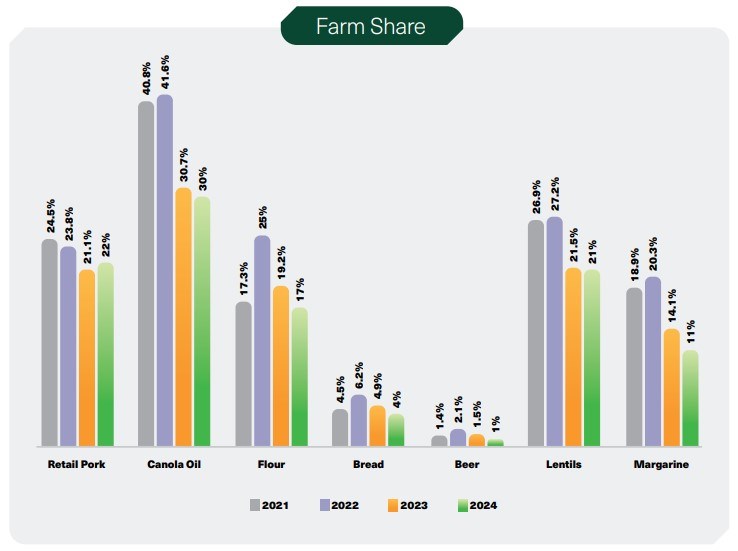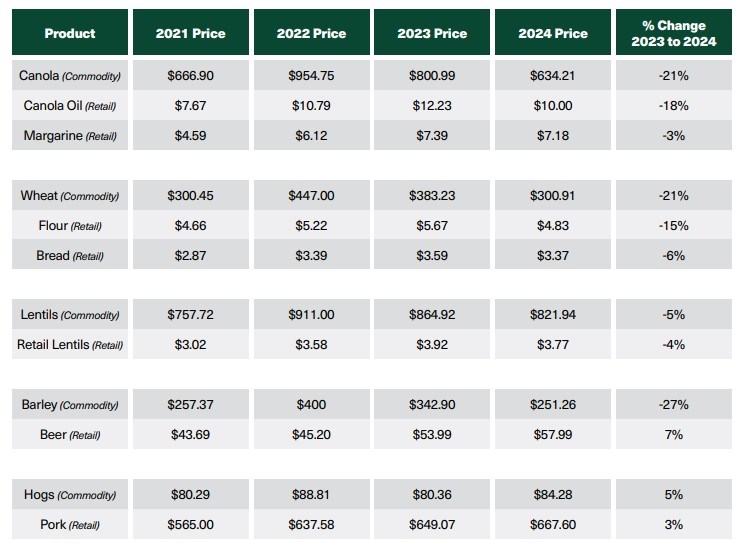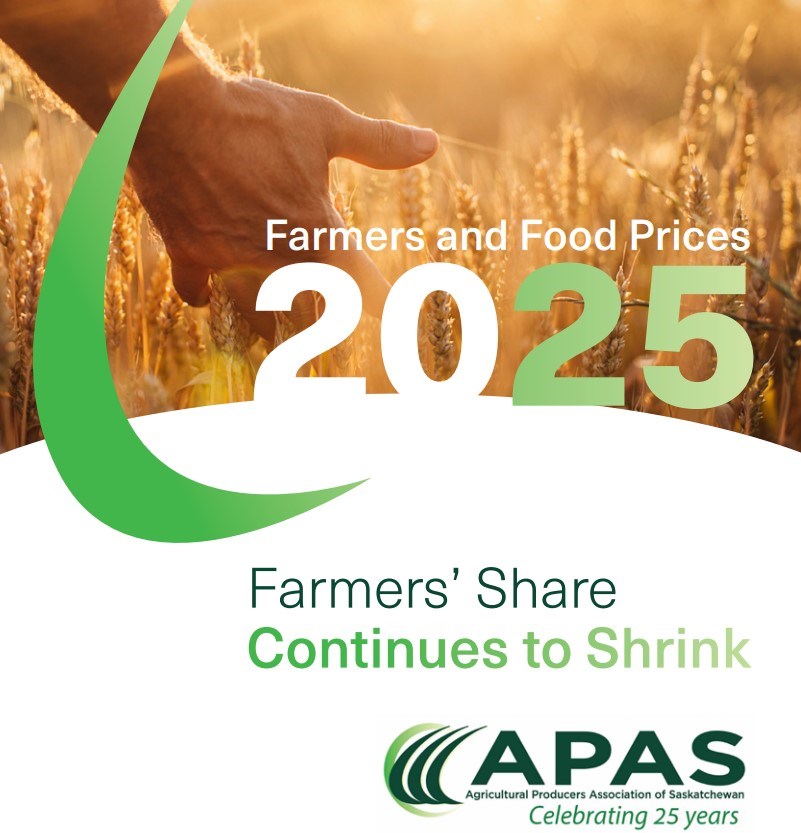The gap between the cost of groceries and what farmers, who produce those foods, receive in return is wider compared to the previous three years, according to the Agricultural Producers' Association of Saskatchewan's (APAS) third annual "Farmers and Food Prices" report.

A second chart in the report compares the price of commodities to the price of grocery items in the same time period to demonstrate "a clear and detailed view of the realities in commodity pricing relative to grocery stores."
It also stated: "While many food prices have receded from their peaks last year, they remain notably higher than three years ago. This data underscores the ongoing challenges in aligning commodity prices with final consumer prices, highlighting the need for greater clarity throughout the food supply chain to support informed consumer choices and ensure equitable practices across the industry."
To that end, the full implementation of the Grocery Code of Conduct, which is expected to be January 1 after the major grocers formally sign on, "marks an important advancement in efforts to enhance transparency with the Canadian food supply chain. Initiated amid concerns about high and escalating food costs, which were prevalent during the first publication of this study in 2023, this code aims not directly to reduce food prices but to foster greater transparency and accountability among Canadian grocery retailers."

APAS President Bill Prybylski said a number of factors have contributed to the downward trend in the "farm share".






